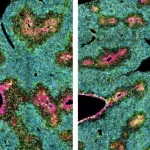New Delhi: While iron deficiency has long been identified as the primary cause of anaemia, experts now highlight that air pollution and vitamin B12 deficiency are significant contributors to its rising prevalence in India.
Anaemia, a condition characterized by insufficient haemoglobin in the blood to transport oxygen to tissues, primarily affects women and children. In severe cases, it can lead to impaired cognitive and motor development in children.
Emerging Factors Beyond Iron Deficiency
Dr. K Madan Gopal, a public health expert from the National Health Systems Resource Center, New Delhi, emphasized that recent research challenges the traditional understanding of anaemia in India. A study by the Indian Council of Medical Research (ICMR), published in the European Journal of Clinical Nutrition, found that iron deficiency contributes only marginally to anaemia, while air pollution and vitamin B12 deficiency play a far more significant role.
“Exposure to fine particulate matter (PM2.5) triggers systemic inflammation, which disrupts the production and survival of red blood cells, exacerbating anaemia,” Gopal explained. He suggested that local efforts to monitor pollution and educate the public on mitigation strategies could help combat inflammation-induced anaemia.
Dr. Sabine Kapasi, advisor to the United Nations Covid-19 Task Force, cited research showing that long-term PM2.5 exposure can reduce haemoglobin levels by 2-3 per cent, thereby increasing anaemia risk by 12-15 per cent.
Vitamin B12 Deficiency and Diet
Vitamin B12 plays a crucial role in the formation of red blood cells. In a country where vegetarian diets are predominant, vitamin B12 deficiency is common. Dr. Kapasi noted that over 50 per cent of Indians lack adequate B12 intake, leading to megaloblastic anaemia, which manifests as weakness, dizziness, and cognitive impairment.
A National Challenge and Government Efforts
Anaemia remains a major public health challenge in India. According to the National Family Health Survey (NFHS-5), approximately 57 per cent of women of reproductive age and 67 per cent of children aged 6-59 months are affected by the condition.
The government’s Anemia Mukt Bharat initiative aims to address the issue through iron and folic acid supplementation, food fortification, and strengthened primary healthcare services. However, experts stress that a more comprehensive approach is needed.
“At the community level, empowering health workers, community leaders, and NGOs to advocate for better nutrition and environmental health is crucial,” said Gopal. “Anaemia must become a ‘felt need’ at the grassroots level.”
A Multi-Pronged Approach
Experts advocate for a holistic approach to tackling anaemia, including:
- Fortifying staple foods like rice and wheat with essential nutrients.
- Enhancing public awareness about nutrition and balanced diets.
- Encouraging the consumption of B12-rich foods or fortified alternatives.
- Implementing early screening for vitamin B12 deficiency.
- Addressing environmental triggers such as air pollution through stringent policies and public engagement.
As the understanding of anaemia evolves, the emphasis is shifting towards broader interventions that go beyond iron supplementation. Tackling the combined impact of air pollution, nutritional deficiencies, and socio-environmental factors will be key to curbing the widespread prevalence of anaemia in India.
Disclaimer: This article is for informational purposes only and should not be considered medical advice. Individuals concerned about anaemia or related health conditions should consult a qualified healthcare professional.












